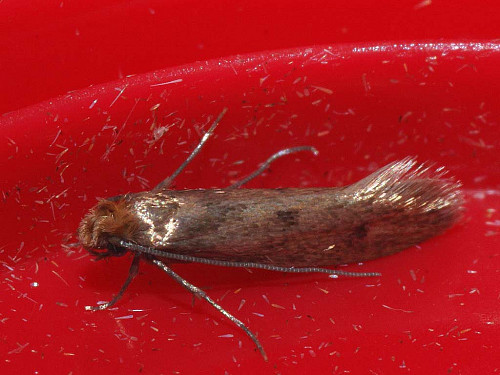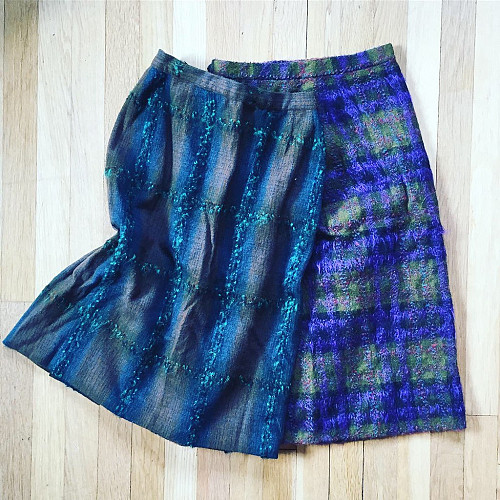Clothes Moth Control
Are your clothes safe this summer? When you packed away your favorite woolly sweaters and long johns last spring, you probably didn’t expect to give them a second thought till sometime in November.
Problem is, though, that while you’re vacationing or simply relaxing in the backyard, your winter clothing may be under attack. Clothes moth larvae are most active, as well as hungriest, in warm weather. Find out how to prevent or get rid of these pests, with our clothes moth control tips.
ID clothes moth species
- Webbing clothes moths (Tineola bisselliella), the species more commonly found in North America, are straw-colored, 1/3” long with a wingspan of ½”. They are not strong flyers and -- unlike most other types of moth -- avoid light.
- Casemaking clothes moths (Tinea pellionella) grow to approximately 3/8” in length. They are gold-beige in hue and have brownish wings with darker spots. Their larvae are attached to a silk-like case, which serves as a retreat when they are disturbed.
What do moths to clothes?
Clothes moth larvae feed on keratin, a component of animal fibers found in clothing and other household items. These include:
- Wool clothing, blankets, rugs, drapes, and upholstery
- Cashmere, mohair, and angora (usually a blend of goat hair and sheep’s wool)
- Silk
- Any cotton or synthetic fabrics which contain some animal fiber
- Piano felts and hammers
- Fur
- Leather
- Feathers
Besides holes, larvae leave the following souvenirs in your clothing: webbing, feeding tubes, and feces. Ewww! That’s why good clothes moth control is essential.
How do moths get onto clothes in the first place?
Over a 2-3 week period, mature female moths lay between 40 and 50 eggs. Their favorite nesting place? A spot where their offspring will have easy access to the foods they prefer … usually a dark, quiet closet or similar clothing storage area.
Once the eggs hatch into larvae (after 4-10 days), they begin feeding. The larval stage lasts anywhere from 35 days to 30 months!
Eventually the larvae form pupae and emerge as adults, ready to begin the cycle again.
Important to know
While pupae and adult moths will not attack your clothing and fabrics, without adequate clothes moth control, they’ll breed, producing larvae which will do damage.
Clothes moth control methods
- Clean your house. Regularly dust, sweep, or vacuum the dark, hidden areas where moths love to hang out and lay their eggs. Pay extra attention to closets, heating vents, baseboards, wall cracks, and the underside of furniture and carpeting.
- Clean your clothes. Wash or dry clean animal-fiber items after use, especially prior to storing for long periods. Moths prefer to nibble on fabrics which bear traces of food, sweat, and urine. Machine-wash at least 20 minutes in water above 120 degrees F to kill moths, pupae, and larvae. Pressing with a hot iron has a similar effect. (CAVEAT: Check care labels first. Many wool garments can’t tolerate high temperatures.)
- Use moth repellents. Mothballs are the traditional method of protecting stored garments. Keep these toxic products out of reach of children and pets. Natural herbs and essential oils, such as lavender, are pleasanter-smelling, but their effectiveness is debatable. The scent of Eastern red cedar wood can kill small moth larvae (but not larger ones); keep it fresh by sanding every few months.
- Dehumidify. Clothes moths, like many other insect pests, thrive in damp environments. Maintain your indoor relative humidity below 55 percent; use your air conditioning system’s dehumidification feature in summer or a dehumidifier in cooler seasons.
- Use the power of the sun. On a hot sunny day, spread animal fiber garments and rugs outdoors in a clean dry place. Thoroughly brush or vacuum all items to remove larvae.
- Trap. Place pheromone traps (purchase the type specifically for clothes moth control) in locations of suspected infestation. These sticky traps, designed to catch male moths, serve 2 purposes: to confirm infestation and to reduce clothes moth breeding.
- Hire pro pest control. For a serious infestation, find a reliable clothes moth control expert. They will professionally fumigate to get rid of the moths and help you salvage your possessions.
Laura Firszt writes for networx.com.
Looking for a Pro? Call us (866) 441-6648

Pest control Average Costs
Exterminators Experiences

The Best Pest Control Service For My New Florida Home

Pest Control: Fast, Orderly Removal Of A Wasp Nest From Our Fence






